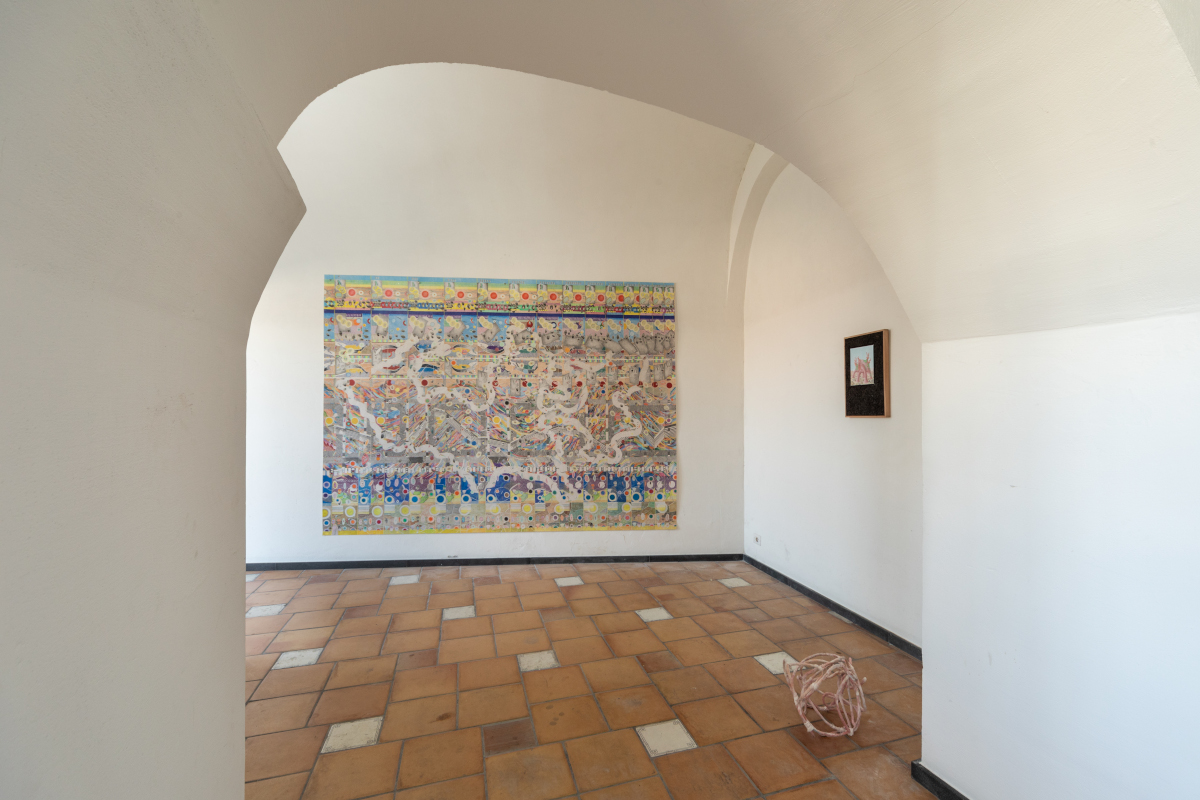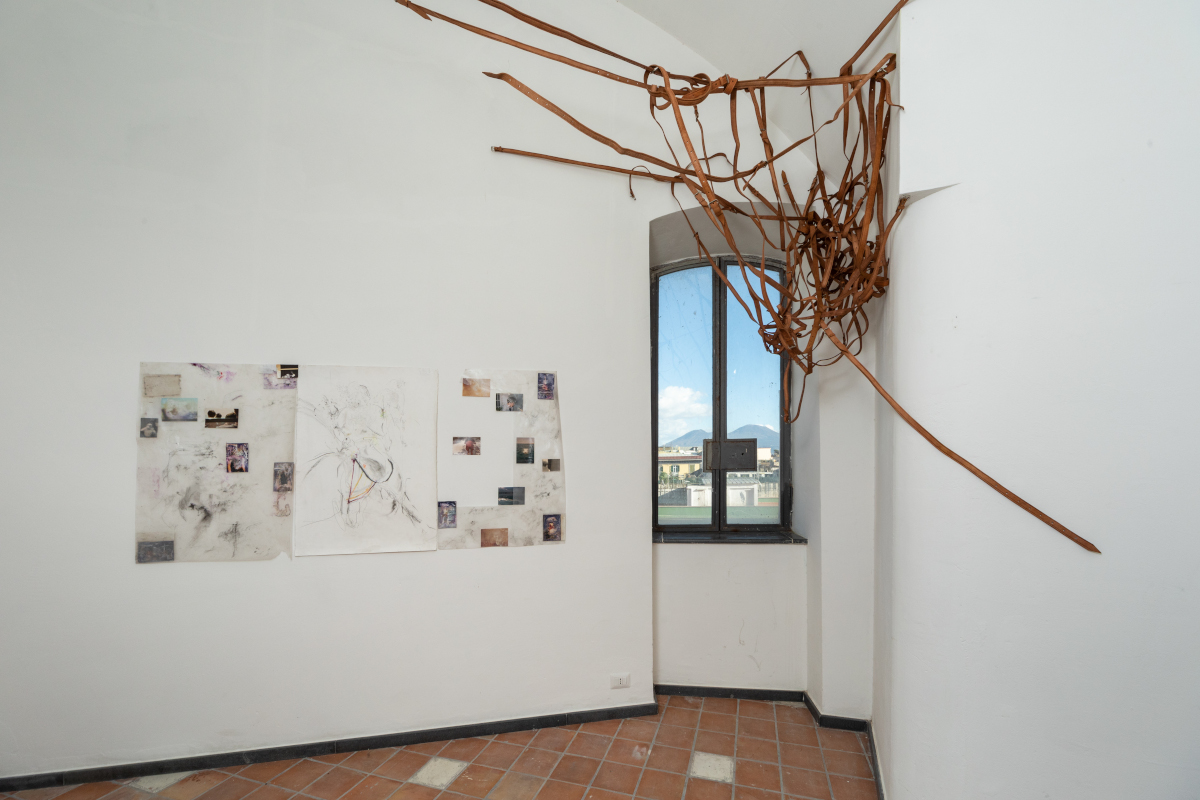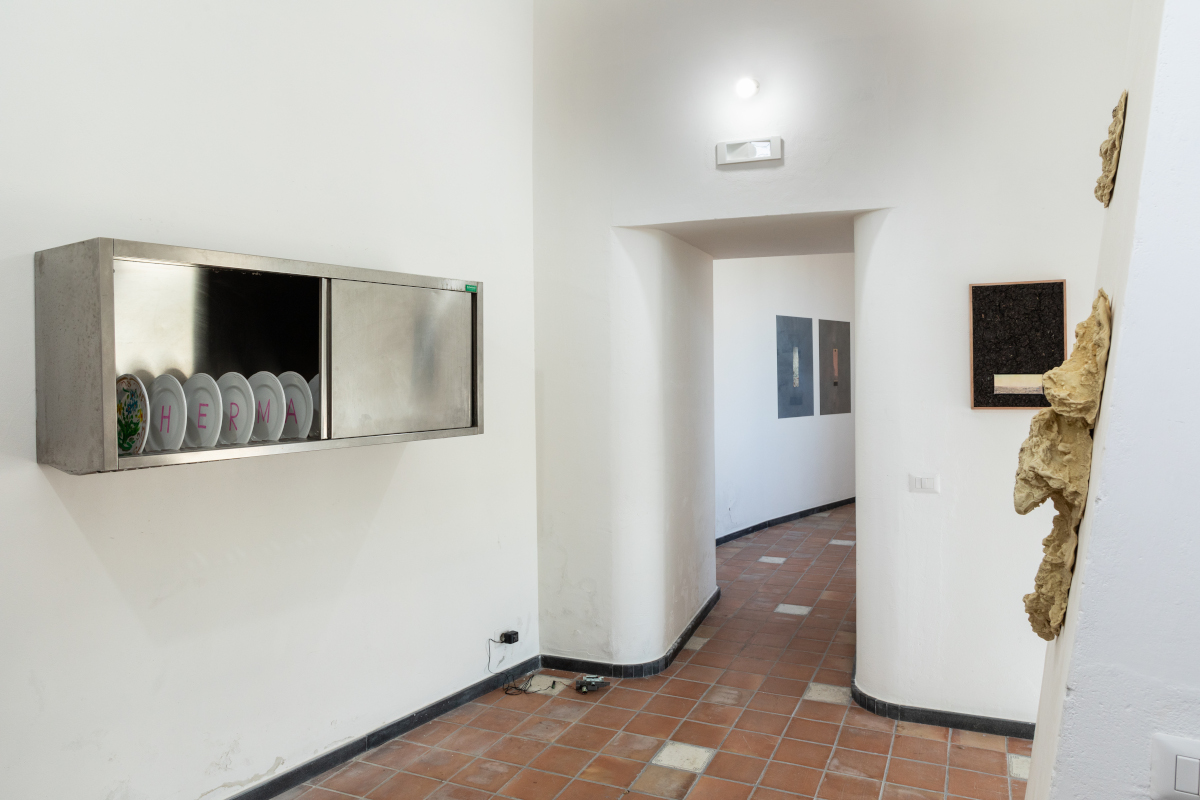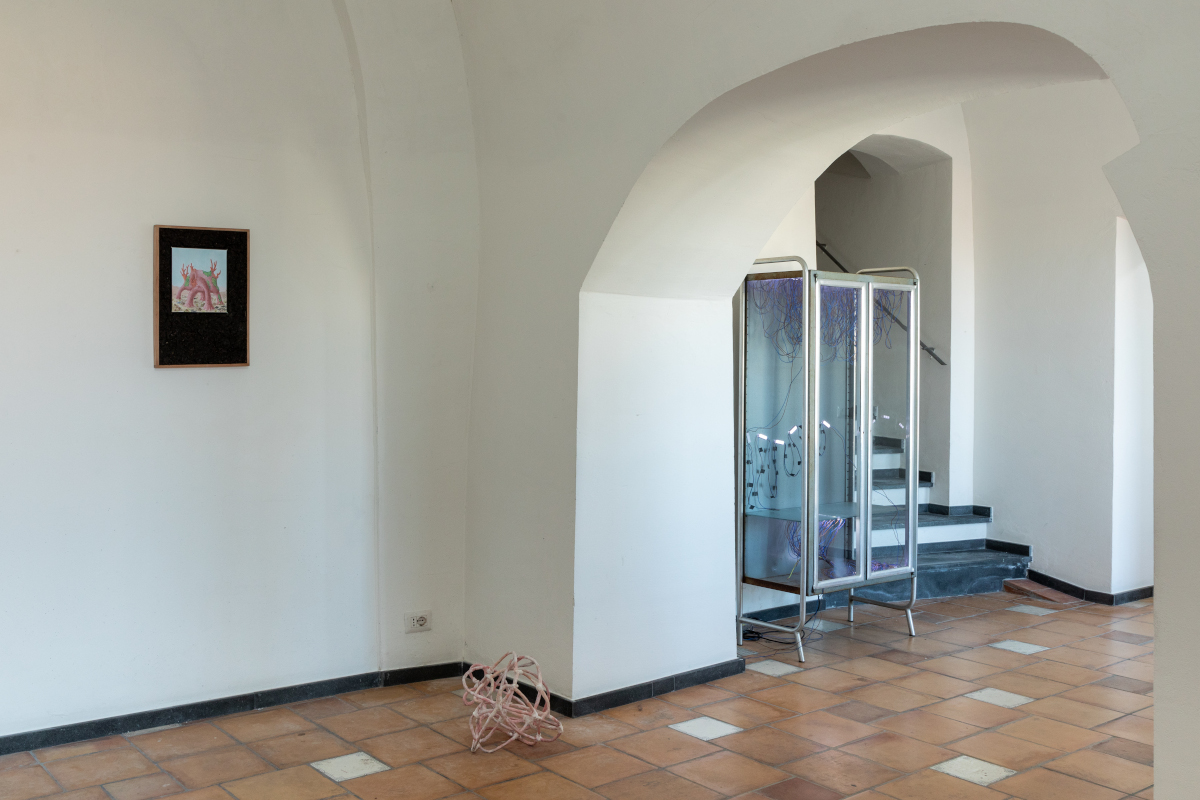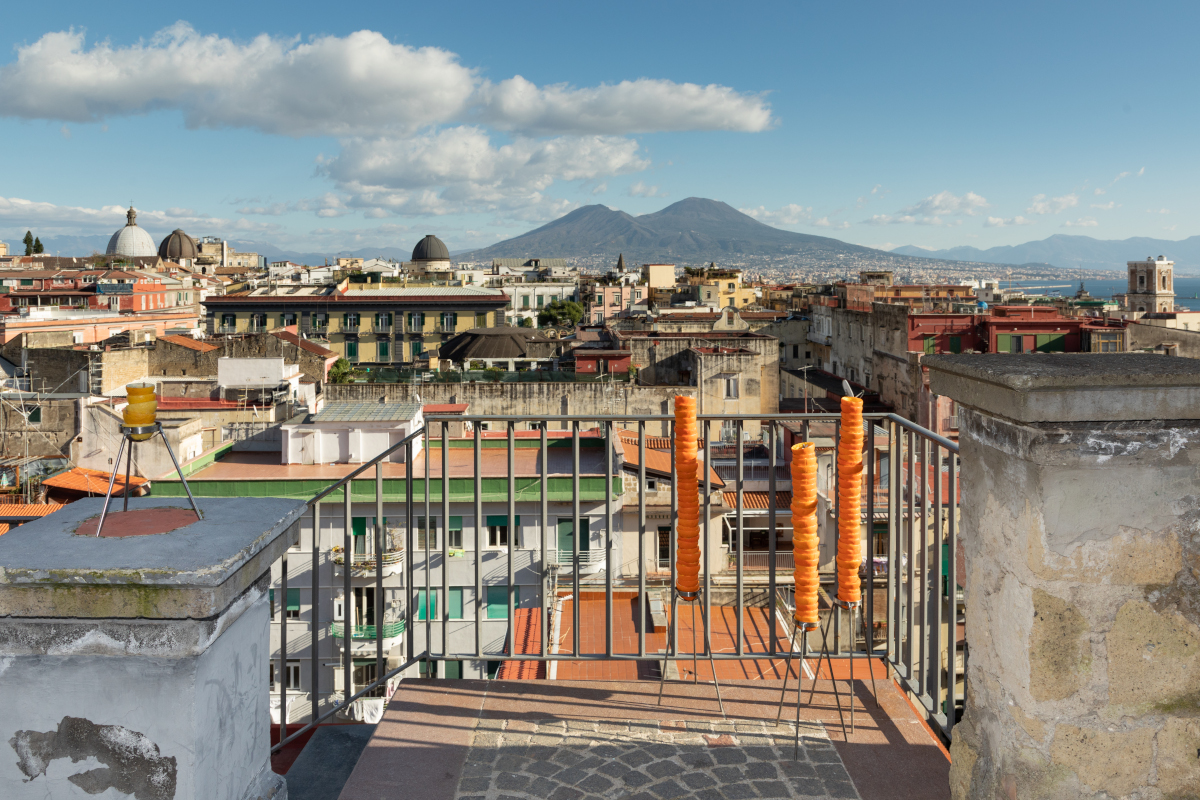
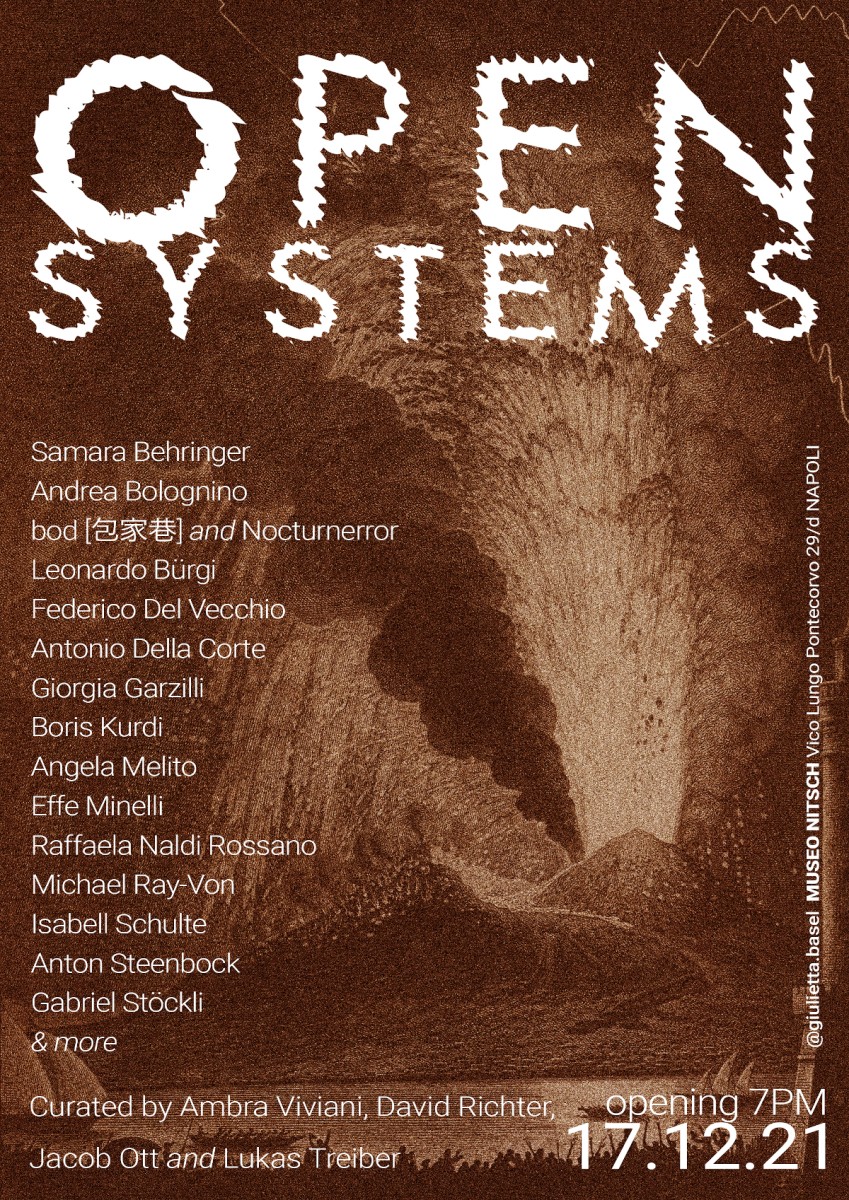
17th december 2021
START 7:00 p.m.
Museo Hermann Nitsch
Vico Lungo Pontecorvo 29/d, Naples
Curated by Ambra Viviani, David Richter, Jacob Ott and Lukas Treiber
w/ Samara Behringer, bod [包家巷], Andrea Bolognino, Leonardo Bürgi, Federico del Vecchio, Antonio della Corte, Giorgia Garzilli, Boris Kurdi, Angela Melito, Effe Minelli, Raffaela Naldi Rossano, Michael Rey Von, Isabel Schulte, Anton Steenbock, Gabriel Stöckli & more.
How can self-referential closure create openness? It is not a matter of adaptation, nor is it a matter of metabolism. It is a peculiar constraint on autonomy arising from the fact that the system would simply cease to exist in any, even the most favorable environment, if it did not equip the momentary elements that compose it with the capacity for connection, that is, with meaning, and thus reproduce them. Different structures may exist to accomplish this, but only ones that can withstand the radical trend toward immediate (and not merely gradual, entropic) dissolution of the elements. The point of departure must be the difference between system and environment. System are oriented by their environment not just occasionally and adaptively, but structurally, and they cannot exist without an environment. They constitute and maintain themselves by creating and maintaining a difference from their environment, and they use their boundaries (contorni) to regulate this difference, Without difference from an environment, there would not even be self-reference, because difference is the functional premise of self-referential operations. In this sense boundary maintenance is system maintenance. But boundaries do not mark a break in connections, as one cannot state that internal interdependencies are greater than system/environment interdependencies. The concept of boundaries means, however, that processes which cross them have different conditions for their continuance after they cross the contorno.
- Installation view. Isabell Schulte, part VIII (2021), Antonio Della Corte, Where living forms can exist (2021), Angela Melito, Hela havet stormar (il gioco delle sedie) (2021), Open Systems, Museo Hermann Nitsch, Naples, 2021 © Danilo Donzelli Photography
- Installation view. Andrea Bolognino, Engramma (2021), Samara Behringer, Untitled (2021), Open Systems, Museo Hermann Nitsch, Naples, 2021 © Danilo Donzelli Photography
- Installation view. Jacob Ott, Questo è per Pina (2021), Antonio Della Corte, Untitled 8 (2020), Leonardo Bürgi, Drylands (2021), Raffaela Naldi Rossano, Skin 01, Skin 02, Skin 03 (2019), Open Systems, Museo Hermann Nitsch, Naples, 2021 © Danilo Donzelli Photography
- Installation view. Isabell Schulte, part VIII (2021), Antonio Della Corte, Where living forms can exist (2021), Angela Melito, Hela havet stormar (il gioco delle sedie) (2021), Open Systems, Museo Hermann Nitsch, Naples, 2021 © Danilo Donzelli Photography
- Installation view. Federico Del Vecchio, Fetichisme and lemon soda (2018), Open Systems, Museo Hermann Nitsch, Naples, 2021 © Danilo Donzelli Photography

